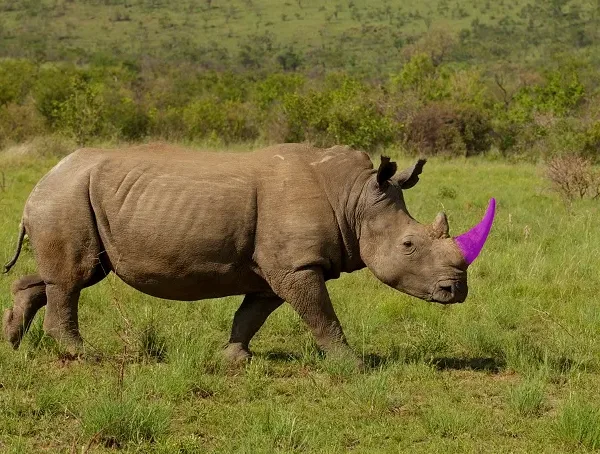On the Internet you can read about an unusual way of fighting poachers - animal rights activists allegedly paint the tusks and horns of animals bright pink. It is reported that after this procedure, ivory and rhino horns cannot be sold on the black market. We checked whether this method is real.
There are often publications about painting tusks and horns pink on social networks. According to numerous posts, the paint used cannot be washed off, but it does not cause any harm to animals. In addition, different entries indicate different options for the original use of this paint, but it all comes down to the banking industry: somewhere write, that this paint is needed for bank checks, and somewhere - that it mark banknotes or watered stolen banknotes. It is also argued that buyers do not need horns and tusks of this color, so they cannot be sold and the point of hunting is lost, and the animals remain safe. All such publications are accompanied by one or two photographs showing a rhinoceros and an elephant with pink horns and tusks, respectively.
Among the posts we found in the Russian-language segment of the Web, the most widely circulated post was from the “Zen” public page on VKontakte: it published in 2020 and with 345,000 views, received 13,000 likes and 300 reposts. These publications can also be found in other large communities on VKontakte (examples here, here And here), as well as on Twitter (here, here And here) and on Pikabu, where in 2015 there was a post about an elephant with pink tusks dialed 6700 pluses. Moreover, sometimes notethat this is a simple and ingenious way to combat poaching.

Back in 2015, during the active dissemination of news about a new method of protecting animals, the Metro publication took comments from specialists. “There are people among animal defenders who paint the tusks and horns of animals,” explained Elena Zharkova, spokeswoman for the International Fund for Animal Welfare. “But ivory is a very strong material that is saturated with paint only from the top; the ink cannot penetrate deep into the tusk.” It will then be polished and eventually sold. Zoo activists will not paint it right through. Can you imagine what it’s like to approach an adult male with huge tusks and paint him pink? This is an operation on the edge of life and death, it is very difficult to do. That is, the effectiveness of such saving the elephant population is minimal.” Chairman of the Union of Bonists Alexander Baranov confirmed that the “money paint” will not be able to absorb so deeply: “It will paint it on the outside, maybe even a millimeter of this paint will be absorbed. But an elephant’s tusk is like a person’s teeth—the outside will be stained, but they are not porous, it’s not a sponge.”
In fact, at least one animal welfare organization, the Rhino Rescue Project, which operates in the Sabi Sand Game Reserve, actually uses pink dye in an attempt to stop poaching. similar to the one used in the banking sector. However, there are a number of inaccuracies in the online publications mentioned above.
Let's start with the fact that the colors in the photo do not reflect the actual result of processing the horns. According to website project, “a compound consisting of ectoparasiticides and a permanent dye is added to the horn, it contaminates the horn and makes it unsuitable for use for decorative or medicinal purposes.” When a viral photo of a rhinoceros with a pink (more likely even purple) horn went viral back in 2013 published On the Take Part website, the photo was accompanied by a caption stating that “the photo has been digitally manipulated” and that it is not a real image of the animal. You can verify this by comparing the picture with the original, posted on the Getty Images photo agency website.

IN section with answers to frequently asked questions on the Rhino Rescue Project website, there is a comment regarding inaccurate social media posts. According to the explanation of the authors of the project, they are glad that the concept of devaluing horns as a preventive measure to combat poaching has gained recognition and dissemination on the Internet. However, they lamented that much of the interest in the initiative is based on embellishment and misinformation, and viral photos lead to unrealistic expectations about how the method works.
The truth is that devaluing antlers is a much more complex process than simply painting the surface pink (or any other color, for that matter). Focusing on one element of a comprehensive strategy without considering all others is not only misleading because it detracts from the complexity of the procedure, but can also be potentially dangerous to both animals and people. No purchaser or consumer of rhino horn is advised to eat or use processed horns simply because they show no outward signs of depreciation. Our ongoing research has led to the use of newer technologies such as radioactive isotopes, so we do not rely solely on infusions of toxins and dyes. For that matter, it is these new technologies that should be discussed and promoted in society, and not the outdated and often misunderstood methodology.
At the end of the answer, the authors formulate a summary in two separate paragraphs explaining the reasons why rhinoceros horns will not be pink:
- the color will not be visible soon after treatment and will not serve as a deterrent, since animals clean their horns and roll in the mud every day;
- conspicuously colored horns will make all other animals in the population without colored horns an even more desirable target for poachers.
According to schemes And photoAccording to the Rhino Rescue Project website, rhino horn has a tubular structure into which substances can be injected under high pressure. Before we start procedures the animal is euthanized with a tranquilizer, then holes are drilled in the horn, where special probes and valves are installed through which the compound is introduced. The check valve holds the fluid in the horn at a pressure of approximately 30 bar for ten days, allowing the fluid to penetrate deep into the internal structure. By data project, all substances used are environmentally friendly, biodegradable and safe for animals. The treatment should remain effective for the full horn growth cycle (approximately three to four years), after which a repeat treatment is required.
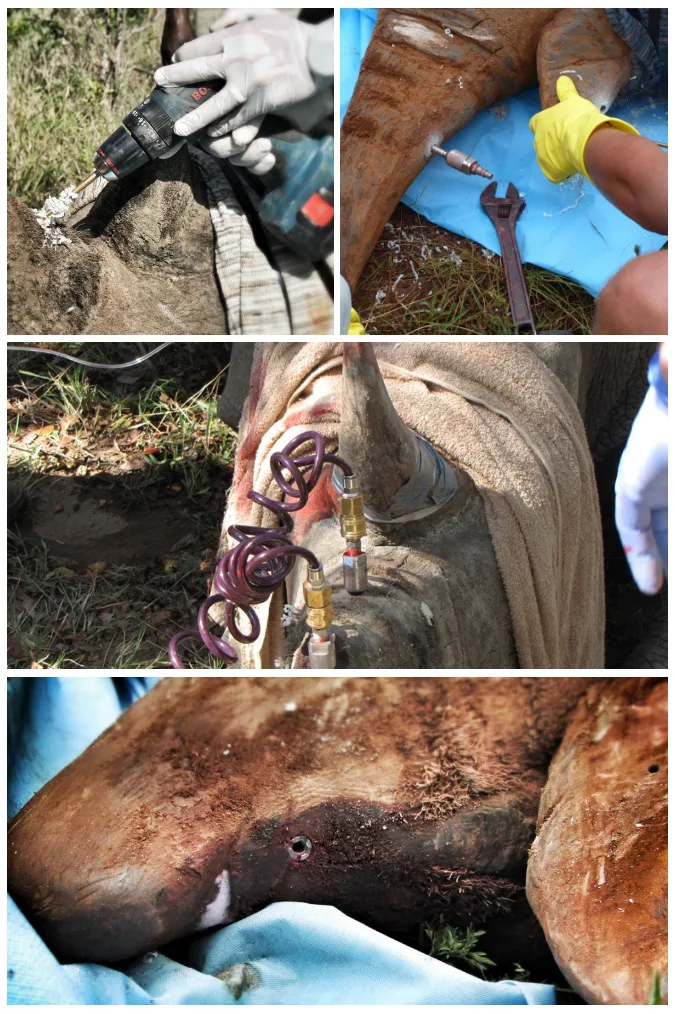
Also on the project’s social networks There is several unaltered photos of animals after the procedure. They show that stains from the infused substance remain on the horns. At the same time, on the site indicatedthat sometimes no dye was used at all in the procedures, so that some animals had no color changes even inside the horn.

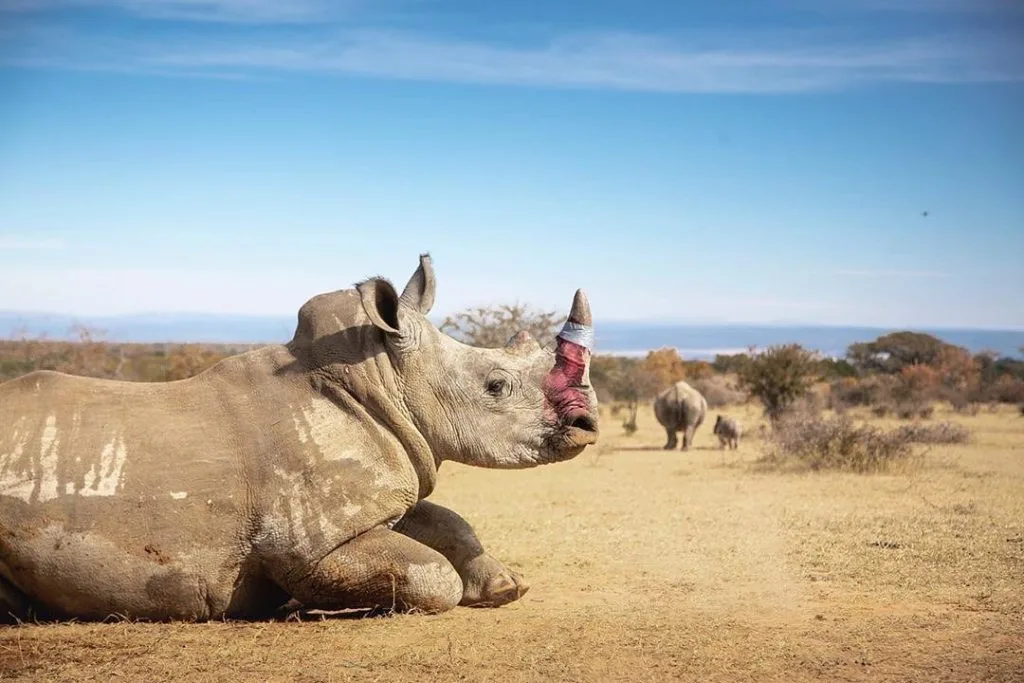
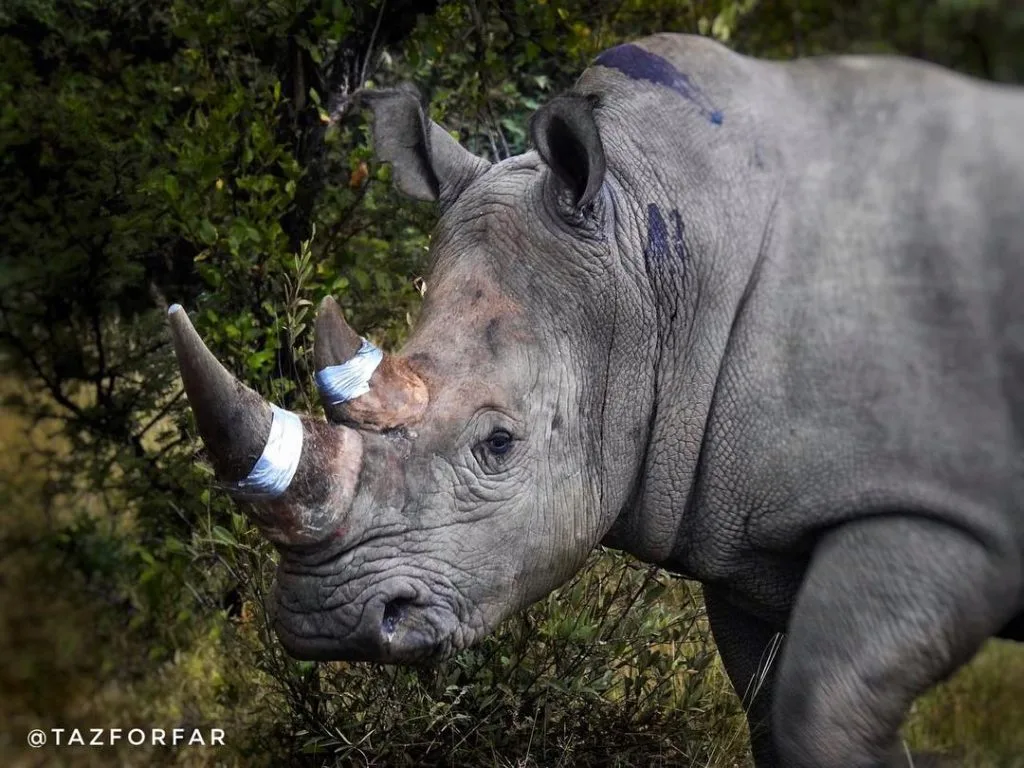

In addition to the fact that the dye changes the color of the internal structure of the horn, it is also poisonous to humans. Co-founder project Lorina Hern in 2015 told, that poachers can develop serious health problems depending on the dose taken: “At a minimum, diarrhea, nausea, vomiting, severe headaches, and even problems with the nervous system may begin, which may remain forever. Some ectoparasiticides also promote the development of cancer later in life.”
Poachers in advance warn about the presence of poisoned horns on rhinoceroses through more than two hundred signs along the perimeter of the reserve. In addition, according to the authors of the project, if poachers do not pay attention to the unnatural color of the internal structure, even processed horn, crushed into a fine powder, will not be able to pass unnoticed through many checkpoints (particularly at airports) due to the visual marking system.
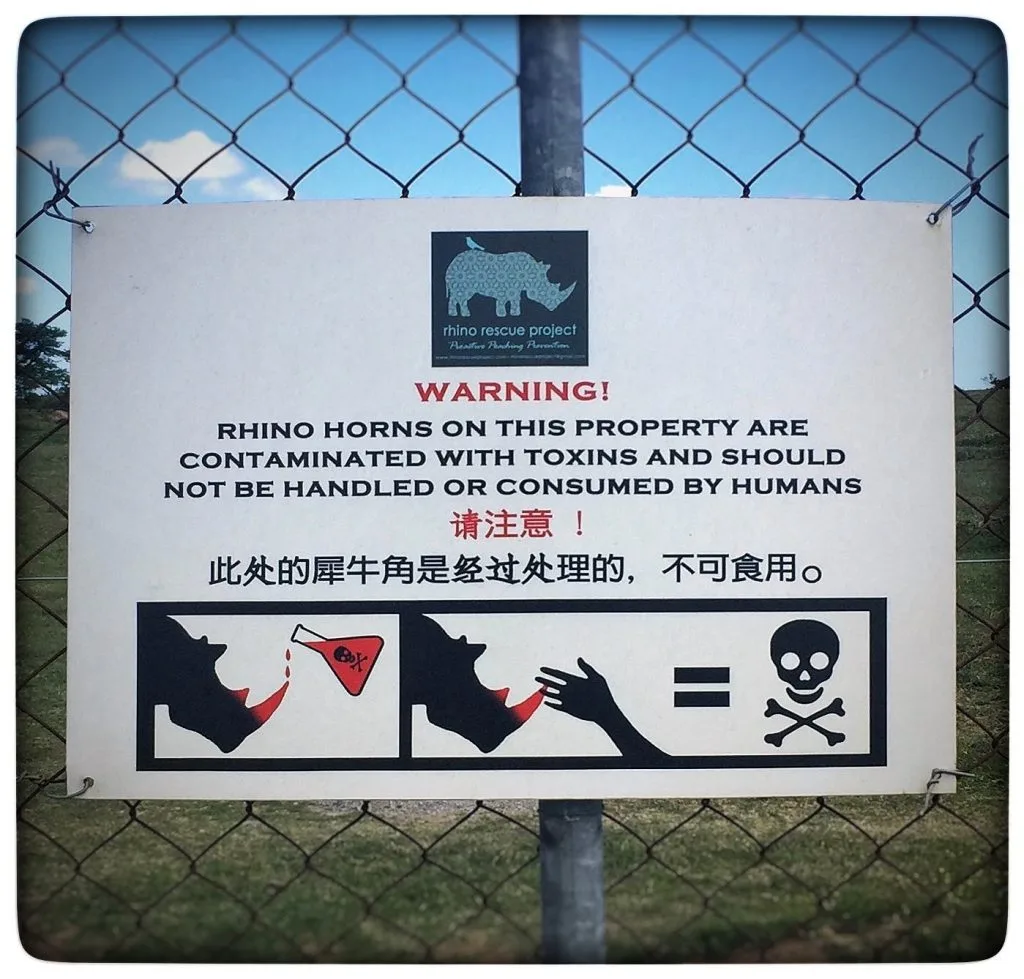
It is important to note that the Rhino Rescue Project's technology and methods have been criticized numerous times. For example, on the website of the International Fund for Animal Welfare there is article about the inappropriateness and harm of such an approach to protection from poachers. The effectiveness of the horn poisoning technique was also questioned by the South African National Park Service. “This strategy will never help in the fight against poaching because we have so many rhinos that we cannot even catch them. But I think this will be a good measure for those who have few rhinoceroses,” explained Kruger National Park spokesman William Mabasa.
On the Save the Rhino website published materials, according to which the Rhino Rescue Project method does not work at all: they report that samples taken from the horn a month after treatment showed no visible color change. According to Save the Rhino, rhino horn is not porous and the liquid compound does not penetrate the entire horn. In other words, the mixture of poison and dye remains in the drilled holes, making it relatively easy to clean the horn if it is actually eaten.
As for the photograph of an elephant with pink tusks, it was also processed in a graphics editor. A real photo of an animal with natural-colored tusks is at least 17 years old: it can be found on British websites Open University And BBC Radio 4 in materials for 2005. We could not find any examples of the procedure of painting or poisoning elephant tusks.
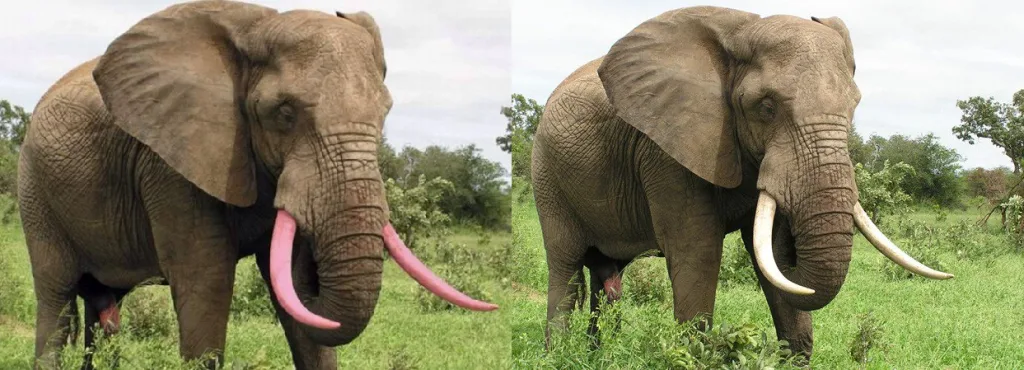
Thus, the authors of the publications we are considering distorted and greatly simplified the actually existing, albeit often criticized, practice of protecting rhinoceroses, accompanying the materials with falsified photographs.
Cover photo: photo montage Take Part
Mostly not true
- Is it true that elephants are the only mammals that cannot jump?
- Is the photograph of an elephant carrying a lion cub in its trunk true?
- Is it true that elephants are afraid of mice?
- Is it true that in Finland reindeer antlers are painted with reflective paint to reduce the number of accidents with them?
- Snopes. Are Rhinos and Elephants Getting Pink Horns to Prevent Poaching?
If you find a spelling or grammatical error, please let us know by highlighting the error text and clicking Ctrl+Enter.


